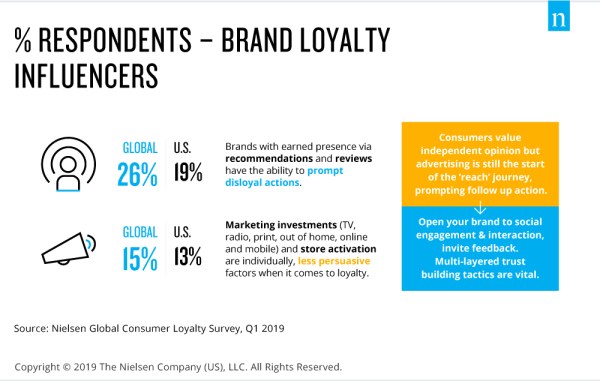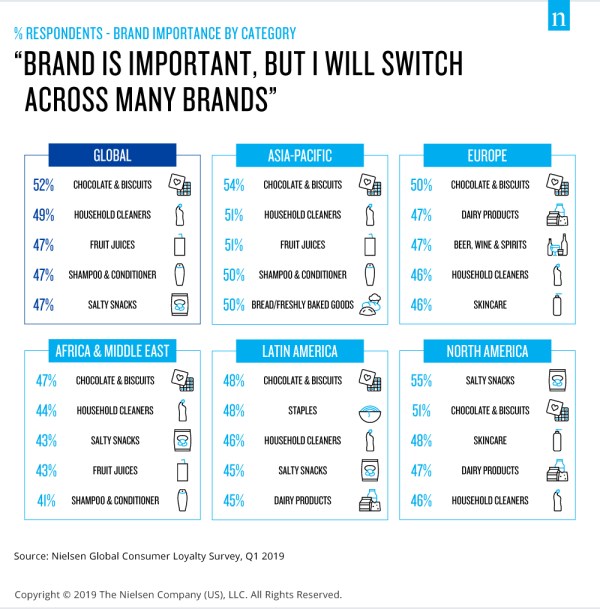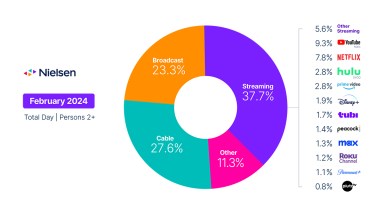America is responsible for nearly half (48%) of the world’s advertising spending. This is followed the closest by measured nations in Europe, which represent 30% of ad spending. Together, these two regions account for nearly 80% of Nielsen-estimated global advertising budget and are driving the most annual growth in these investments. You’d expect this wide reach to result in consumers addicted to the new products that surround them. But interestingly enough, compared to the rest of the world, consumers in these two regions are the least open to trying new things.
“It’s not a coincidence that the markets that spend the most on advertising are least susceptible to brand disloyalty,” says Matthew O’Grady, Global Managing Director at Nielsen Media. Advertising actively reminds consumers why they should continue to purchase a certain brand or product. “Consumers lack that constant reminder in markets where advertising spend is low,” he adds. “As a result, they consider more options and are ultimately more likely to stray.”
Surveyed consumers in both the U.S. and Europe confirm that both regions rank below the global norm when it comes to consumer affinity to newism in consumer packaged goods (CPG). With this in mind, it’s critical to understand what actually does entice these consumers to try new products and to ultimately switch brands. Loyalty has always been a treasured commodity for companies, but now that consumers have endless choice and omnichannel access, it’s disloyalty, or brand switching, that manufacturers and retailers should pay attention to.
Nielsen survey research shows that earned presence is more likely than traditional paid marketing investments to influence consumers to switch brands. Recommendations and reviews, in particular, are forms of earned media that surveyed consumers deem more persuasive in brand switching decisions than in-store activation and traditional marketing investments in TV, radio, print, out-of-home, online or mobile environments.

This means that for CPG, the connection between what consumers watch and buy has never been more complex or more important to understand.

From a buying and consumption standpoint, brand disloyalty is most prevalent among packaged food categories. In Asia-Pacific and Latin America, for example, packaged foods represent four of the top five categories where brand infidelity runs the strongest. Relative to advertising spend, it’s nations within these two regions that spend the least on food-related ads. This is where there’s opportunity to ensure that advertising is best positioned to attract disloyal consumer sentiments where they run the strongest. In this case, that’s with food and beverage products more so than non-food items.
Advertising is most definitely a key driver of a brand’s reach, and for disloyal consumers, it’s likely to prompt follow-up action among consumers. But social engagement and invitations for feedback and dialogue are essential to building trust and inspiring more than awareness by winning actual purchases. Brands should treat every message as a chance to entice disloyalty. Only 8% of consumers across the globe consider themselves firm loyalists to the products they use. Expect this to get worse, and embrace it. While just a fraction of consumers today remain strict loyalists, nearly half (46%) of the world are more likely to try new brands today than they were five years ago.
Disloyalty, when harnessed, can be your source for growth.
Read more in our latest Total Consumer Report.
Note: Nielsen Ad Intel gathers audio/visual data both collected by Nielsen technologies and/or provided by Nielsen data partners. Nielsen classifies each ad placement within the Nielsen market categorization and a taxonomy of advertisers and products. It is then harmonized across markets to allow for cross-market analysis. Countries covered in this analysis include South Africa, Australia, Indonesia, Malaysia, New Zealand, Philippines, Singapore, Thailand, Belgium, Bulgaria, Czech Republic, Germany, Ireland, Italy, Luxembourg, Netherlands, Norway, Spain, U.K., Puerto Rico and U.S.



